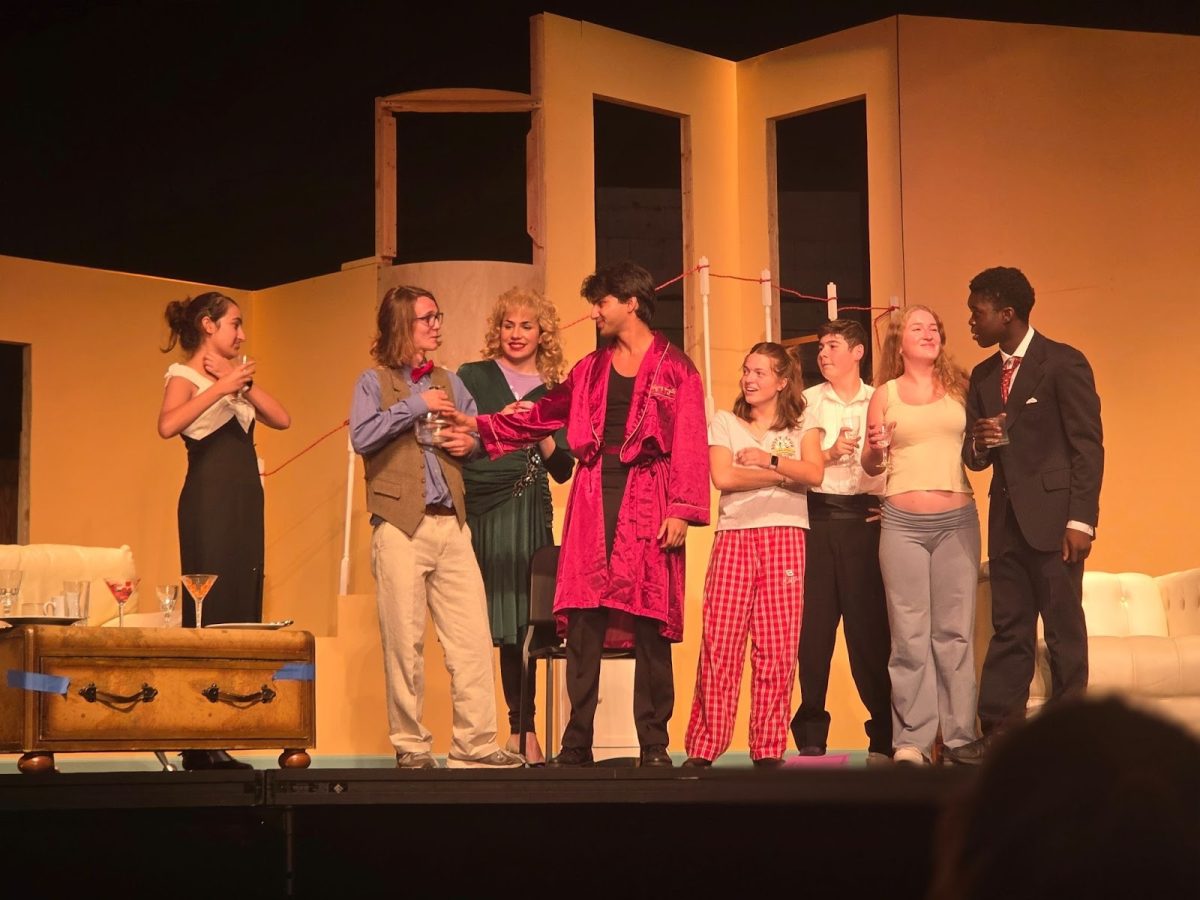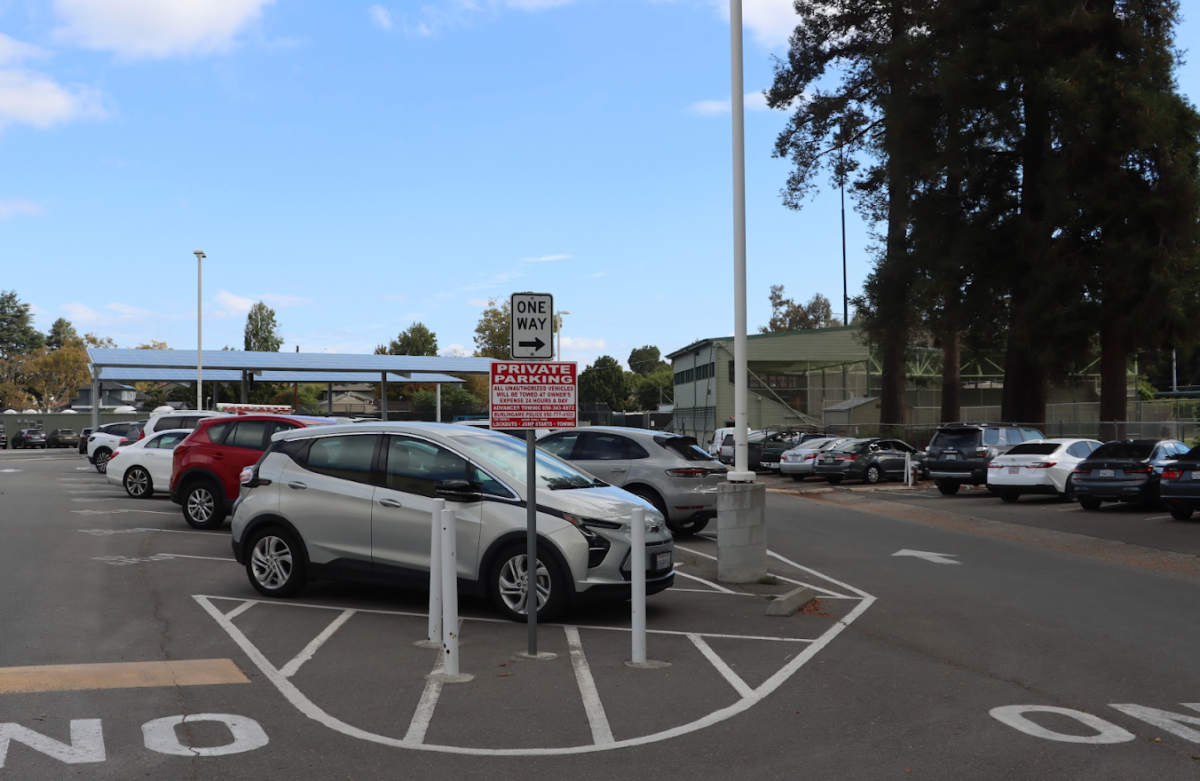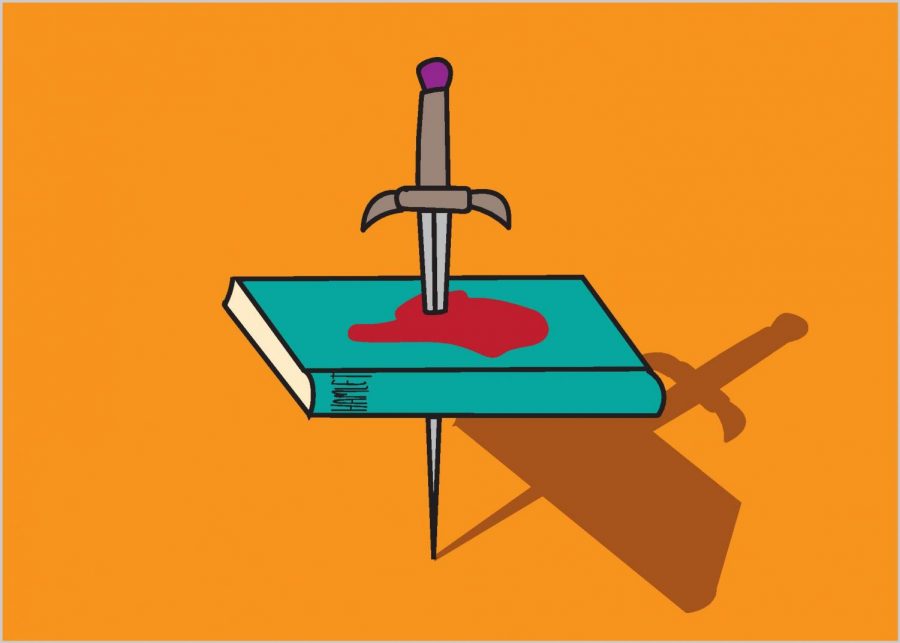Shakespeare deters students early on
Common Core State Standards (CCSS) outline guidelines for English courses in public high schools in the state of California which include reading one Shakespeare play.
January 25, 2021
Throughout my four years of high school, I’ve had 18 mandatory books assigned to me, and three of them have been by William Shakespeare. That means that over 16% of the mandatory books I’ve read in high school have been the work of one man. The exact quantity of books and various titles vary with Advanced Placement (AP) and Advanced Standing (AS) courses assigning more rigorous texts. And of course, the school does have some books on our assigned reading list written by authors who don’t all look like ancient-tight-lipped-white men, but it still feels as if I can’t escape the guy.
My first encounter with Shakespeare was reading “Romeo and Juliet” my freshman year. I hated it. I would reread passages multiple times and still have no clue what had happened, often giving up due to my frustrations. This was not a unique experience. Many of my fellow classmates would wallow in self-pity in the hallways, grumbling about not understanding anything that we were reading, many rebelling against the play altogether and resolving not to read it at all. Frustrations only grew when it came to writing and discussing the play. “Romeo and Juliet” was originally published in 1597, and since then it’s been scrutinized, dissected and debated relentlessly. As a fifteen-year-old just learning to read difficult literature, I had no clue how to interpret the text. I entered high school feeling secure in my abilities to read and write, but I couldn’t help feeling inadequate when it came to interpreting this text. Despite the fact that I chose to be in an AS class (though at the time CP English I classes also read “Romeo and Juliet”), reading the play almost felt like sabotage, and rather than provoking ambition within me to succeed, it temporarily thwarted it.
It’s not uncommon to talk to another high school student and find out that they haven’t read a book to completion in years. Some boast about this as though it is a badge of honor, rebelling against the English curriculum and everything it stands for. Other students are not far off from this mentality, teetering on the brink of giving up on literature. Maybe Shakespeare isn’t entirely to blame for this, several other books I’ve read in high school English classes have been overwhelmingly uninspiring, but his work seems to stick out specifically as a test set before fifteen year olds with the understanding that many of them will fail. Reading in high school shouldn’t always be easy, but it should feel purposeful and attainable. If it isn’t, many will choose to forgo the experience altogether. If we want students to grow and learn from English classes, it’s absolutely essential that the books we read in high school, especially early on, reel us in and teach us to love literature. That means not just catering to the academically exceptional, but making room for people who struggle with reading.
AP English courses are not available to underclassmen, and Burlingame has recently done away with the (AS) English I course for freshmen, instead grouping all freshmen into the same English I curriculum. This change was intended to level the playing field for incoming freshmen and encourage less confident students to challenge themselves and recognize their potential. We should try to send this same message through the curriculum, teaching students early on to enjoy reading instead of overwhelming them.
It probably sounds like I hate Shakespeare from all of this, but truly, that’s not the case. Just a few months ago, I read and enjoyed Shakespeare’s “Hamlet.” Some critical things changed this year: I had three years of experience in high school English classes under my belt, and a lot more confidence in my ability to analyze and write about different topics. Reading “Hamlet” in an AP Literature class, I was able to see the value dissecting passages and making connections within the text, and for the first time, I felt I could make sense of what I was reading. The diction definitely posed challenges for me along the way, but I went into it knowing I could do it. Although you could argue I only had the confidence to read “Hamlet” because I had practiced reading Shakespeare as a freshman and sophomore, I think I gained a better understanding of literature in other books. My sophomore year experience reading “The Catcher in the Rye” and then “The Scarlet Letter” in junior year were both moments where I was able to genuinely enjoy a mandatory reading novel and derive interesting conversation and analysis from it, encouraging me to continue tackling difficult literature.
Part of the reason that we read so much Shakespeare is due to the Common Core State Standards (CCSS) that set guidelines for assigned literature in public high schools. The CCSS recommends Shakespeare for students in grades nine through 10, but only explicitly enforces the reading of one of Shakespeare’s plays for grades 11-12. Shakespeare is the only author directly named, save for some American foundational documents in history classes. One other requirement is reading a play by an American dramatist, though Shakespeare does not fulfill this, given that his origin country is England. Of course there isn’t too much leeway for instructors when it comes to CCSS, but we should take the liberty of refusing their optional recommendations for underclassmen when it is necessary.
Several changes have been made to the mandatory reading list in the last few years, such as introducing Angie Thomas’ novel “The Hate U Give” to the freshman curriculum, demonstrating that Burlingame is working to modernize our mandatory reading lists. This past year, due to distance learning, the English department temporarily removed “Romeo and Juliet,” mainly to cope with fewer instructional hours. While this adjustment is temporary, it tells us that we can do without all of our reading of Shakespeare, and I sincerely hope that this becomes a permanent change.
Shakespeare has had an incredible impact on storytelling as we know it, and his work continues to be cherished and beloved by many. We absolutely can and should enjoy his plays, but in order to do so, we need to set up an environment where students feel encouraged to read his plays and more. Teaching Shakespeare to underclassmen puts fear in less confident students that they aren’t cut out for difficult literature, though they have the potential to be proficient in a wide range of texts later on. As students muster their way through the plights of teenagerdom, we should do everything in our power to teach them to love literature and to aspire to tackle more challenging texts. If that means casting aside “Macbeth,” then so be it.







































Lysithia "Lily" Page • Jan 5, 2022 at 6:34 pm
I sympathize with the sentiment that Shakespeare can be difficult, especially for readers who aren’t all that familiar with his archaic vocabulary and poetic syntax. But it seems to me an egregious error to be deterred by the challenge. But, you might ask, why do you defend old, wormy books? Simple. Shakespeare’s works are a gift. They crack open the most meaningful parts of being alive: love, faith, friendship, war, death. Deny students the opportunity for contemplating such matters, and they miss out on inquiry (and sublime language!) which has the propensity to stick with them through the rest of their lives.
For the students who get confused while reading these plays (as I was during my freshman year and often still am), a noble attempt at a tough passage is so fruitful! It means that there is a depth of richness waiting for you, you especially, should you aim to cut your teeth on the funky diction. As Ophelia says, “We know what we are, but know not what we may be.” We shouldn’t be scared of confusing things, but rather allow our perplexity and wonder to embolden us.
Bethany Li • Mar 8, 2021 at 3:35 pm
I found this article presented a balanced and informed perspective. Thank you, Allison, for your thoughtful insights and lived experience. This topic is good food for thought and a helpful reminder that we can continue to find ways to make curriculum accessible and meaningful for all learners.